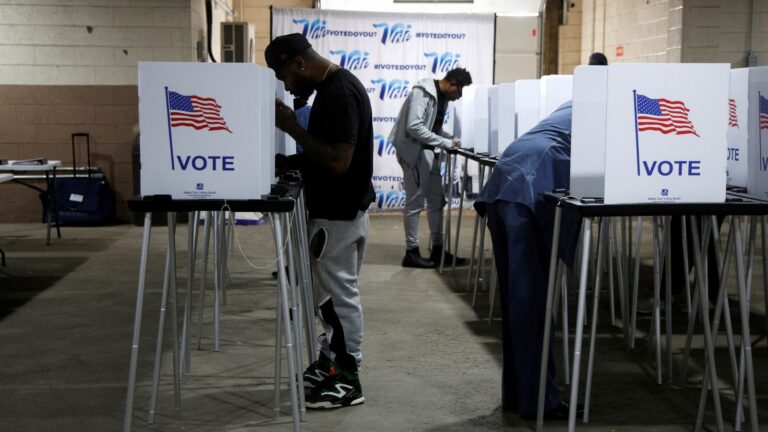As the United States prepares to elect a new president, the terms “blue states” and “red states” are at the forefront of all political discussions. These labels indicate each state’s political leanings based on voting behavior in recent elections and reflect the deepening partisan divides in the country.

What are blue and red states?
In terms of political climate, “blue states” are states that primarily vote for Democratic candidates, while “red states” lean Republican. This binary classification became evident during the 2000 presidential election, when television networks began using color-coded maps to represent election results.
Blue states: States such as California, New York, and Illinois are typically considered blue. These states tend to support progressive policies, prioritize social justice, and often have urban centers that advance their political agendas.
Red states: Conversely, states like Texas, Alabama, and Wyoming are classified as red. These regions often emphasize conservative values, personal freedom, and limited government intervention, reflecting the preferences of people living primarily in rural and suburban areas.
Voting trends in recent elections
In the last presidential election held in November 2020, there was a noticeable divide between blue states and red states. Democratic candidate Joe Biden won a total of 306 electoral votes, a significant number of them from blue states. Notably, states such as Michigan, Pennsylvania, and Wisconsin, which had previously trended red, are now trending blue, indicating a change in the political climate.
In contrast, Republican incumbent Donald Trump won 232 electoral votes, mostly from red states in the South and Midwest. States like Florida and North Carolina remain battlegrounds, illustrating the complexity of the electoral map, with some traditionally red states showing signs of shifting demographics and political sentiment.
recent trends
As the 2024 election approaches, analysts are closely monitoring developments that could reshape the relationship between blue and red. Issues like economic recovery, health care and climate change are at the forefront of voters’ concerns. In addition, younger voters and more diverse populations in suburban areas are influencing the results, with many analysts hinting at the possibility of redistricting in certain red states.
According to opinion polls, states such as Arizona and Georgia that received the green light in the 2020 election may continue to be extremely important states in determining the next president. Conversely, some blue states face challenges, with heightened debates about crime, taxes and housing affordability that could sway voters.

